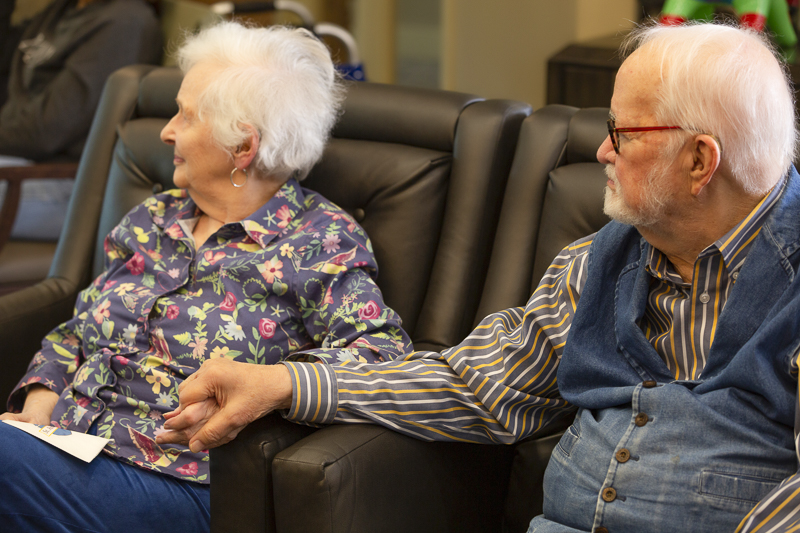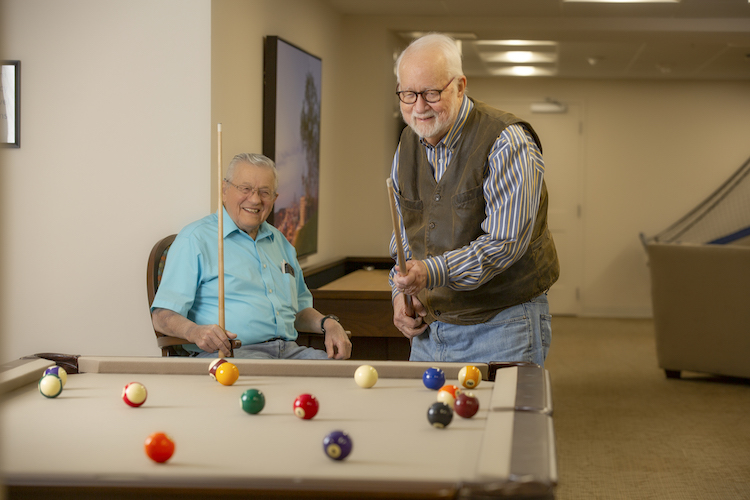Over the last couple of years, our society has had to confront an invisible enemy—COVID-19—and the long-lasting effects of a global pandemic. For as real and close to home as this pandemic hits, we want to take time in November to acknowledge another disease that is nearly as invisible and just as detrimental to the senior living population. We’re writing this month about Alzheimer’s disease because November is Alzheimer’s Awareness Month.
The campaign—promoted by the Alzeimher’s Foundation of America—outlines the reasoning on their website:
“November is Alzheimer’s Awareness Month, a time to heighten awareness about Alzheimer’s disease and show support for the more than 6.2 million Americans living with it. There are a number of quick and easy ways you can help raise awareness, show support and fight Alzheimer’s disease!”
We don’t know about you, but the number “6.2 million” stops us in our tracks. Unfortunately, we know that a very small fraction of that number—yet a fraction nonetheless—resides at St. Anthony’s. Before we address how our staff handles Alzheimer’s care and awareness year-round, let’s look a little deeper at the disease itself, and how doctors and scientists are working to learn more about this terrible senior living condition in an effort to bring healing and hope to families everywhere.
Alzheimer’s Statistics
We know 6.2 million is far too many individuals who endure Alzheimer’s. But it’s worth noting a few more statistics in an effort to wrap our minds around the depth and reach of the disease itself.
- 13.8 Million*. The number today’s original “6.2 million” is expected to grow to by the year 2060.
- 11 Million. The number of caregivers who walk alongside Alzheimer’s patients each day.
- 15.3 Billion. The number of unpaid hours of care offered to Alzheimer’s patients.
*Statistics provided from the Alzheimer’s Foundation of America via the Center for Disease Control and Prevention and the National Institute of Health.
There are other statistics we could discuss, but it’s the statistics on caregiving we want to dive into a little deeper—namely because they hit so close to our St. Anthony’s home.
The Importance of Professional Alzheimer’s Care
If you or someone you know is walking alongside a loved one experiencing Alzheimer’s symptoms, we understand it’s a long journey. In many cases, there are sleepless nights and endless conversations wondering how one might best care for an Alzheimer’s patient.
We are here to say that one of the best ways to move forward is by reaching out to a doctor about appropriate next steps. More often than not, the individuals who consult a doctor turn to a memory care facility next in the process. We are MORE than happy to have a conversation with you if this issue is your current reality. Please don’t hesitate to contact us today.
Now back to that “15.3 billion” number.
We view that number in one of two ways. 1) We know that number is a projection, but we do believe that, in the same way Alzheimer’s Awareness Month is promoted during November, caregivers should also receive as much recognition for their hard work. At St. Anthony’s, we ensure our staff is paid properly for their hard work—so many of our selfless staff do what they do because they love our residents, and we share that sentiment across the board.
But 2) we also don’t let “time” hinder us from the job that needs to be done. What’s that job? Doing everything in our power to care for YOUR loved ones. In the end, we’re truly concerned with one number: 1. That number represents the individual we’re called to care for at any given moment—it’s how we think senior living is supposed to be.
Mental Health as We Age
It’s easy to take a disease like Alzheimer’s as something so far down the line— “I feel so bad for those walking through that disease!” And it’s true, as millions of people around the globe obviously deal with this issue on a daily basis.
But the reality is that we’re all getting older. All our bodies are deteriorating in a way that’s only human. And at some point, each of us must confront a diminishing memory—and in some cases, unfortunately, that memory declines to the point of symptoms of Alzheimer’s.
So what must we do?
We must stay alert. Get educated. And ensure we’re all taking the precautions before it’s too late. If you are between the ages of 40-60, you might be at risk for early-onset Alzheimer’s disease. We know that’s a shock to some (because 40 is still so young!) but it’s important you do not forgo regular visits to the doctor.
And in the meantime, we ask that you wear and recognize TEAL this November. (Visit AFA’s resource page to learn how to promote). Every time you see that color, know that Alzheimer’s disease is much more visible than it once was. Individuals no longer need to suffer in the quiet of each day—there is a community available to anyone experiencing symptoms, and St. Anthony’s would be honored to help your loved one in the process.




